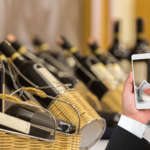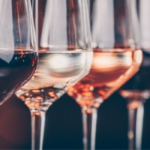Wine Ecommerce: what is the situation?
The online wine market is a fast-growing sector that doesn’t want to show any signs of slowing down. To date, 10% of total retail sales are online wine shopping accounts (source: eMarketer), which has a significant impact on traditional retail sales.
The figures from the American Census Bureau show that retail sales in the United States have increased rapidly over the last twenty years, from 5 million in 1998 to more than 2,000 billion in 2021. In Europe, the total number of e-commerce business was 15% in 2014 and 19% in 2017 (source: Eurostat).
According to data provided by Eurostat, the fastest growth in the European Union is for the 20 to 24 years old: the percentage of internet users who bought online in the last 3 months increased by 25% between 2013 and 2017, from 51% to 64%, where this increase was 14% for all individuals.
Since 2000, the increasing adoption of Internet, from 52% of the total population in 2000 to 89% in 2018, has really increased with the acceleration of online sales.
According to the Statista website, the e-commerce revenues of the top 5 countries in 2018 are as follows:
• China: $ 584 billion
• United States: $ 474 billion
• Japan: $ 105 billion
• United Kingdom: $ 103 billion
• Germany: 70 billion dollars
Trends in eCommerce
Growth by category
If at the top is the electronics sector as a whole (source Census Bureau), food and beverage categories are at the bottom of the ranking, with a very small share of online sales. This will certainly evolve in years to come, as in 2016, when the share of online sales almost doubled in just one year.
Sales will grow in a very different and heterogeneous way according to the sector taken as reference. For example, the US toy market will grow by 19% between 2018 and 2022, while the sporting goods sector is expected to grow by only 9%.
Mobile strategy
With 62% of e-commerce traffic done on smartphone in the second quarter of 2018 (Salesforce Shopping Index), it has become imperative to have ultra-optimized sites for mobile devices. Fast, useful and interesting content is now essential to generate success.
According to data published by eMarketer, online sales made on smartphones accounted for more than $ 156 billion in the United States alone in 2017 and it is estimated that this value is expected to reach more than $ 220 billion in 2019.
eCommerce packaging
Although growing rapidly, it is not surprising that the online shopping sector also faces side effects such as damaged goods, shipping delays and costs, and online fraud. They are often considered secondary, but will be crucial in the growing competition to differentiate partners: moreover, if we consider the figures of the European Commission, the number of people who received goods or services damaged during their purchases online in the EU28 went from 5% to 6%. For this reason, it is essential to pay close attention to the packaging of your shipments. If you send bottles of wine, beer or glass in general, fine-tune them with our NAKPACK system.
Customers tend to perceive packaging as part of the product. According to a study by Dotcom Distribution, 68% of buyers think that a brand can become more attractive thanks to its packaging. In addition, 61% of buyers also said that the sight of a single package made them more enthusiastic about the product.
According to this study, it seems that consumers are increasingly interested in personalized packaging. Any e-commerce company that wants to stand out in 2019 should create a custom packaging to make its brand or store more recognizable, even if it sells on Amazon.
Even packaging will actually help the customer to pay more attention to the brand, perhaps even visiting the site after the purchase and make another one.
Online wine trends 2019
Technology
Although technology has allowed us to become more involved, knowledge about wine has also declined. Indeed, because of digitization, consumers tend not to store information that they have easy access by connecting from their smartphone. In fact, consumers – especially Millennials in the United States and the United Kingdom – know only a fraction of the total number of wines producing countries and regions.
Online sales and information comparison and price control applications have become increasingly dominant in recent years and the trend seems to be on the rise. However, it will take another step forward. As for example the application Vivino that allows you to buy a wine in just 34 seconds by simply scanning the label! Vivino was able to make the experience and the ease of purchase unique. You can enjoy a dinner and try a simply wonderful wine without having any idea where you got it. Scan the wine label, check the price, press purchase and voila, your order is processed! You do not believe in it? Watch this video on Twitter.
Leading e-commerce players enhance the shopping experience with the help of voice assistants, such as Alexa or Google Assistant, because they simplify and facilitate the process of searching and selecting products in stock. Keyboards will gradually disappear in the years to come following the boom of voice assistants, whose impact will also manifest in search engine algorithms (Google, Bing, etc.), which will have to be reinvented to satisfy users.
AI (Artificial Intelligence) has multiple applications in the ecommerce world. One of the main uses in 2019 will be to create more and better product content, improve product marketing, automating a series of mechanical and repetitive actions.
Engage in making an attractive packaging will increase the probability that the final consumer will remember you and will be inclined to share his purchase on social media.
Sales channels
The choice of sales channels is also changing. While retail trade (GDO and retail) seems to be becoming less attractive, the habit of buying online is growing. In addition, many outlets in monopoly markets are becoming more flexible and regulations are changing, allowing the sale of (some) spirits and wines outside monopoly stores. In terms of trade, opportunities are moving towards a “randomization” trend. Consumers are more often in search of quick and experiential uses.
End of free return?
Returns in e-commerce are 2-4 times greater than ones from physical stores, with a growth rate of 53% from 2015 to present. But the return has significant management costs for the brands, impacting the margins in a remarkable way: a side effect that, perhaps, should no longer be ignored
New Products
Cannabis could enter the world of enology. Foods and beverages infused with cannabis are taking place around the world and various companies are studying how to incorporate cannabis into cocktails and cannabis-infused beer. From these drinks to wine, the step is very short.
According to the Canadian investment bank Cannaccord Genuity, the sector’s turnover could reach 600 million from now to the next 4 years.
And what do YOU think will be the next trend in e-commerce? Write it to us in a comment below!
Share this article
Did you like this article?Share it now!
Credit photo Magda Ehlers





